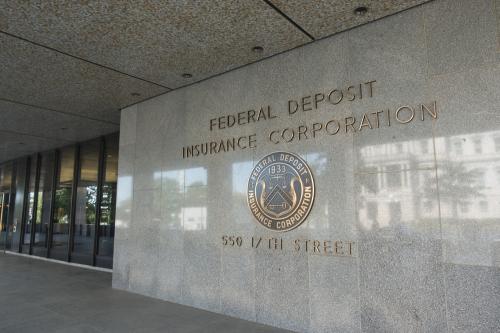These comments were prepared in response to a request for input from the Federal Housing Finance Agency on the Federal Home Loan Banks’ core mission activities and mission achievement.
Thank you for raising these important questions about the mission of the Federal Home Loan Bank (FHLBank) system. Updating the Core Mission Activities (CMA) regulation for the FHLBank system is a critical step in the efforts to redirect the system to again serve primarily public aims. As a law professor who has spent years studying the FHLBanks and a former Congressional staffer who helped write the Housing and Economic Recovery Act (HERA) which created the Federal Housing Finance Agency (FHFA) to regulate the FHLBanks, we have been inspired by the important role the FHLBanks historically played in facilitating the flow of under-supplied credit and promoting the viability of the small financial institutions that are distinctly well positioned to provide that credit. We have been equally disheartened studying the FHLBanks’ operations in recent decades. The FHLBanks today are more focused on maximizing profits and extracting economic rents than serving the public aims that could justify the significant public subsidies the FHLBanks enjoy.
The first question that the Request for Information (RFI) poses is fundamental, and our comments focus almost entirely on the question of how best to tether the main business of the FHLBanks—that is, liquidity provisioning via advances—with the housing and community development aims at the core of the FHLBank system. To preview our conclusion: The FHFA should cease assuming that all advances are core mission activities. General liquidity provision was an important and legitimate function of the FHLBank system during its early decades. At that time, most of FHLBank members were thrifts, thrifts were fundamentally different than banks, and thrifts lacked direct access to the Federal Reserve System (Fed) as a lender of last resort. Today, thrifts and banks are almost identical for economic, legal, and regulatory purposes, and most FHLBank members that engage in maturity transformation can (and should) borrow from the Fed’s discount window if they face liquidity strains.
The evolution of the FHLBank system as a lender-of-second-to-last resort reduces accountability, undermines the efficacy and functioning of the Fed’s discount window, and allows the FHLBanks to exploit their government backstop without furthering public aims. It also allows troubled institutions to continue the same behaviors that led to their problems, exacerbating the eventual negative consequences and increasing risk to the financial system. For these reasons, the CMA should clarify that general liquidity support is outside the mission of the FHLBanks. That means, among other things, that not all advances should be seen as core mission activities.
As we further explain, advances still play a critical role in promoting access to the mortgages families need to buy homes and the credit small business need to survive, and they can otherwise promote community development aims. More creative use of advances to promote those aims should be actively encouraged. Imposing excessively stringent requirements on financial institution members to show that particular advances are furthering such aims could impede the use of advances even in circumstances when they are likely to serve such aims.
The FHFA should use the CMA to lay out a balanced approach, encouraging broad and creative uses of advances when likely to promote credit creation while making clear that not all advances further such aims. This may entail using proxies when appropriate to increase the probability that advances are being used to further a legitimate aim. For example, it may be appropriate to assume that any advances to sufficiently small financial institutions or advances secured by relatively illiquid collateral promote the aims of the FHLBank system. Establishing a reasonable nexus between the provision of advances and the housing and community development aims are the only way to justify the myriad public subsidies the FHLBank System enjoys. The FHFA could also encourage FHLBanks to reward members via dividends, advance terms, or other mechanisms when those members find creative ways to promote the type of lending the FHLBank Act, as amended, implicitly seeks to support.1 Focusing the mission of the FHLBank System on promoting the provision of credit to the households and businesses that need it and primarily supporting smaller financial institutions is the best way to revive the original mission and design of the FHLBank System.
-
Acknowledgements and disclosures
The authors thank Alan Cui for his hard work and research assistance.
The Brookings Institution is financed through the support of a diverse array of foundations, corporations, governments, individuals, as well as an endowment. A list of donors can be found in our annual reports published online here. The findings, interpretations, and conclusions in this report are solely those of its author(s) and are not influenced by any donation.
-
Footnotes
- For a discussion of the way the current dividend policies reflect the wrong set of incentives, see Steven Kelly, Susan McLaughlin, and Andrew Metrick, “FHLB Dividends: Low-Hanging Fruit for Reconfiguring FHLB Lending,” Program on Financial Stability at the Yale School of Management, January 18, 2024, https://som.yale.edu/story/2024/fhlb-dividends-low-hanging-fruit-reconfiguring-fhlb-lending.
The Brookings Institution is committed to quality, independence, and impact.
We are supported by a diverse array of funders. In line with our values and policies, each Brookings publication represents the sole views of its author(s).






Commentary
Comments on the Federal Home Loan Bank mission
July 15, 2024